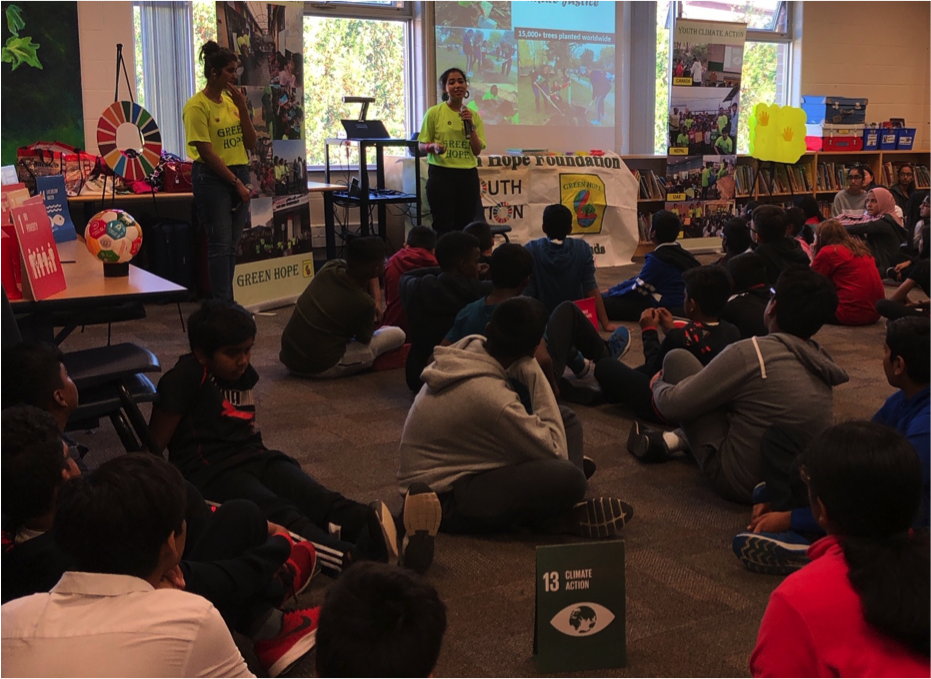The missing link: sustainability education in our school curricula

Quality education is fundamental to achieve a sustainable world and it has been one of the key ingredients for growth in all developmental policies over the last two decades, beginning with the Millennium Development Goals and now as Goal 4 of the SDGs (Sustainable Development Goals). A common misconception about education is that it is synonymous with knowledge from textbooks within a classroom. However, true quality education involves learning beyond textbooks and classrooms. It should adopt a holistic approach towards teaching students not just traditional subjects many of which they never relate to, but about real-life global issues such as peace, environmental conservation, human rights, and equality topics which they confront every day in some form or other.
My work has brought me in close contact with young people from all sections of civil society – from developed nations to those in the global south, from students in public schools to thousands of children who have never been to one. Engaging with them and striving to empower them to develop their latent leadership potential has been my mission and Education for Sustainable Development (ESD) has proved to be the defining factor in aiding this transformation. This is because sustainability education is a pathway that provides students with that holistic education that enables them to gain a multidisciplinary perspective of the world, that supplements traditional academics, as well as embellishes creative expression while inculcating a love for nature through outdoor activities.
Furthermore, non-silo and collaborative principles of Education for Sustainable Development make it the ideal tool for implementing the United Nations Sustainable Development Goals (SDGs) at all levels of society. Such goals are generally not taught to children in elementary schools, which neglects a major part of their growth.
One of the key aspects of Education for Sustainable Development and implementing the SDGs is outdoor education for students, which allows them to connect with society and nature. It is not age-specific and is equally adaptable and applicable across the entire spectrum of civil society, since it provides people, especially children, with the knowledge, skills, attitudes and values needed to achieve a sustainable future. It is especially important to expose young minds to this form of education since it widens their horizons, stimulating their latent creativity as well as increasing their exposure to global issues and perspectives.
Taught in conjunction with traditional knowledge, it forms a powerful holistic education system that helps in the evolution of global citizens, in whom environmental stewardship and social equity are present in equal measure with the drive for economic progress. As global citizens, they learn to have multiple worldviews that help them to empathize and take action to solve the world’s problems, instead of being confined within the narrow lens of their own circle. In a world that is constantly becoming more interconnected and where technology has made previous boundaries outdated, equipping the current generation of learners with the right tools is essential for them not to feel out of a place in a global society.
Thus, it is so critically important for school curricula to include ESD before it is too late. A 2018 report by UNESCO emphatically espouses the need for integrating ESD into our education systems, for its multidisciplinary perspectives and since it employs a variety of expression methods, including creative expression like art and outdoor education, along with in-class education, thereby being all-encompassing and allowing students to gain a broad perspective of the world and facilitating their journey towards becoming global citizens.

It is in this context that the lack of Education for Sustainable Development in Toronto’s elementary schools is so concerning. The largest school board in the city, the Toronto District School Board (TDSB) has initiatives in place that want to achieve ESD and sustainability, but according to a past report (IISD & LSF, 2012), lack of teachers’ interest and funding makes it hard for teachers to want to implement ESD. Education budgets have been continually slashed, especially now as our education system struggles to cope with the pandemic.
However, there is no better time than the current situation for redefining our education system. The process of building back better must include an overhaul of our curricula and the way it is delivered. Integration of ESD in the education curriculum needs to be the first step; however, this alone is not enough. Teachers play a crucial role in the process of imparting Education for Sustainable Development to the students. The education ministry needs to allocate funding for ESD that will provide teachers with the requisite training on gaining the skill sets that would allow them to teach ESD and make it cross-curricular.
The pandemic, in spite of the destruction it has caused, has given us the opportunity of creating a new normal. Creating a more holistic education system is definitely one of the aspects that need to be a part of this recovery process and based on my lived experiences in using Education for Sustainable Development as a transformative tool of empowerment, I have no doubt that its formal inclusion in our school curricula will reap immense benefits for current and future generations.
References
IISD, & LSF. (2012). Education for Sustainable Development in Canadian Faculties of Education. Manitoba: Council of Ministers of Education Canada.

















